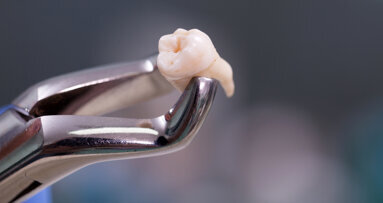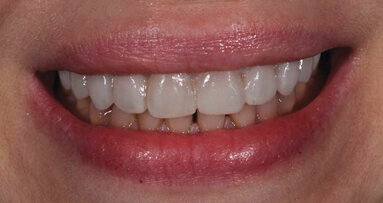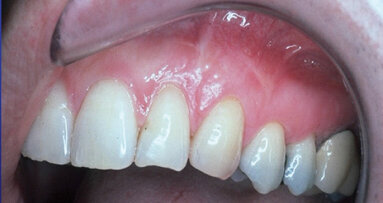NEW YORK, NY, USA/LEIPZIG, Germany: Researchers at the University of North Carolina (UNC) in Chapel Hill in the US have discovered that almost one third of all human genes is involved in the inflammation of gingival tissue. By observing gum samples at molecular level collected from fourteen individuals with mild gingivitis, they found that more than 9,000 genes are expressed differently during the onset and healing process of the condition. According to latest figures of the International Human Genome Sequencing Consortium, the estimated number of genes in the human body ranges from 25,000 to 30,000.
The study, supported by the US National Institutes of Health and oral health care maker Procter & Gamble, is the first to successfully identify gene expression and biological pathways involved with the onset and healing process of gingivitis including those associated with immune response, energy metabolism, neural processes, vasculature, chemotaxis, wound healing and steroid metabolism.
"The study's findings demonstrate that clinical symptoms of gingivitis reflect complicated changes in cellular and molecular processes within the body," said Steven Offenbacher, D.D.S., Ph.D., the study's lead author and director of the UNC School of Dentistry-based Center for Oral and Systemic Diseases. "Understanding the thousands of individual genes and multiple systems involved in gingivitis will help explain exactly what is occurring in a person's body at the onset of the disease and how it relates to their overall health."
Gingivitis is commonly attributed to lapses in simple oral hygiene habits. If untreated, it can lead to periodontal disease, which has been studied extensively for its possible relation to heart disease, diabetes and pre-term birth. The researchers said that understanding how the condition develops and resolves on a molecular level can possibly provide critical insights into gum disease prevention, as well as new treatments.
NIIGATA, Japan/PHILADELPHIA, US: Ageing is known to increase people’s susceptibility to chronic inflammatory bone loss disorders, including periodontal ...
ZEISS, one of the world’s leading medical technology companies, is showcasing its dentistry portfolio this week at the AAE 2025 in Boston.
NEW YORK, NY, USA: NYU dental researchers have found the first long-term evidence that periodontal (gum) disease may increase the risk of cognitive ...
PITTSBURGH, USA: Certain genetic variations may be linked to higher rates of tooth decay and aggressive periodontitis, according to two recently published ...
NEW YORK, N.Y., USA: Throughout February, National Children’s Dental Health Month, America’s ToothFairy: National Children’s Oral Health ...
The decision to pursue ceramic dental restorations is a major one for most patients. There may be a concern that the results will turn out to be different ...
In today’s new information age, patients want a better quality of life. They want to keep their youthful, brighter-appearing smile more than ever; keep ...
NEW YORK, US: Seeking to better characterise the inflammatory consequences of periodontal inflammation, researchers have recently developed two scores to ...
Although they’re preventable, cavities are the leading chronic childhood disease in America. Many low-income families lack basic dental hygiene products ...
CHARLOTTE, N.C., USA: In celebration of National Children’s Dental Health Month, businesses and individuals across the country are invited to join ...
Live webinar
Mon. 22 December 2025
1:00 PM EST (New York)
Live webinar
Mon. 12 January 2026
9:00 AM EST (New York)
Prof. Judith Jones D.D.S; M.P.H., Prof. Kakuhiro Fukai D.D.S., Ph.D, Dr. Bathsheba (Bethy) Turton
Live webinar
Wed. 14 January 2026
12:00 PM EST (New York)
Dr. Théo Laplane, Dr. Robert Gottlander DDS
Live webinar
Fri. 16 January 2026
12:00 PM EST (New York)
Live webinar
Mon. 19 January 2026
1:00 PM EST (New York)
Philipp Kopp, Michael Seeber
Live webinar
Thu. 22 January 2026
2:00 PM EST (New York)
Dr. Nicola M. Grande DDS, PhD
Live webinar
Wed. 28 January 2026
8:00 AM EST (New York)



 Austria / Österreich
Austria / Österreich
 Bosnia and Herzegovina / Босна и Херцеговина
Bosnia and Herzegovina / Босна и Херцеговина
 Bulgaria / България
Bulgaria / България
 Croatia / Hrvatska
Croatia / Hrvatska
 Czech Republic & Slovakia / Česká republika & Slovensko
Czech Republic & Slovakia / Česká republika & Slovensko
 France / France
France / France
 Germany / Deutschland
Germany / Deutschland
 Greece / ΕΛΛΑΔΑ
Greece / ΕΛΛΑΔΑ
 Hungary / Hungary
Hungary / Hungary
 Italy / Italia
Italy / Italia
 Netherlands / Nederland
Netherlands / Nederland
 Nordic / Nordic
Nordic / Nordic
 Poland / Polska
Poland / Polska
 Portugal / Portugal
Portugal / Portugal
 Romania & Moldova / România & Moldova
Romania & Moldova / România & Moldova
 Slovenia / Slovenija
Slovenia / Slovenija
 Serbia & Montenegro / Србија и Црна Гора
Serbia & Montenegro / Србија и Црна Гора
 Spain / España
Spain / España
 Switzerland / Schweiz
Switzerland / Schweiz
 Turkey / Türkiye
Turkey / Türkiye
 UK & Ireland / UK & Ireland
UK & Ireland / UK & Ireland
 International / International
International / International
 Brazil / Brasil
Brazil / Brasil
 Canada / Canada
Canada / Canada
 Latin America / Latinoamérica
Latin America / Latinoamérica
 China / 中国
China / 中国
 India / भारत गणराज्य
India / भारत गणराज्य
 Pakistan / Pākistān
Pakistan / Pākistān
 Vietnam / Việt Nam
Vietnam / Việt Nam
 ASEAN / ASEAN
ASEAN / ASEAN
 Israel / מְדִינַת יִשְׂרָאֵל
Israel / מְדִינַת יִשְׂרָאֵל
 Algeria, Morocco & Tunisia / الجزائر والمغرب وتونس
Algeria, Morocco & Tunisia / الجزائر والمغرب وتونس
 Middle East / Middle East
Middle East / Middle East




























































To post a reply please login or register